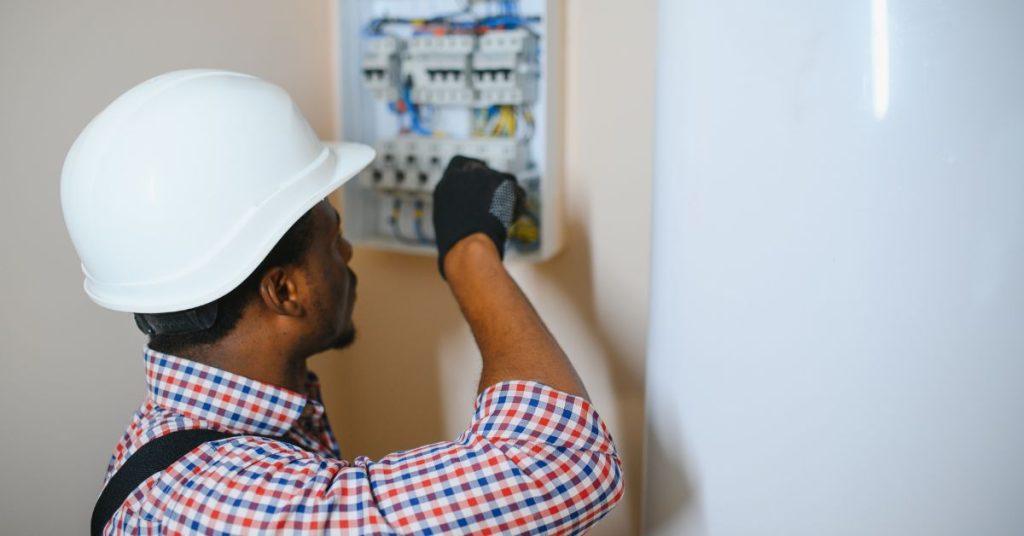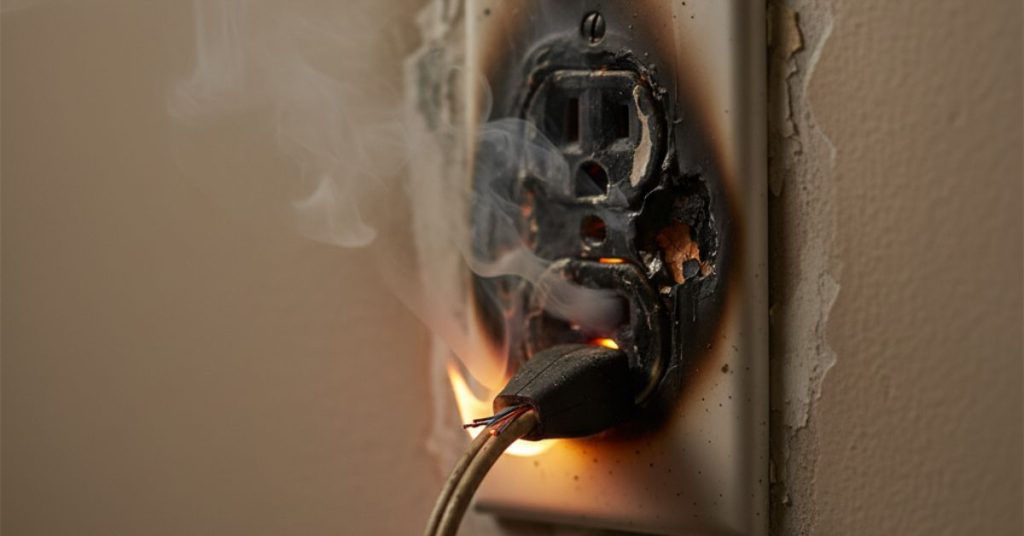During an electrical short circuit emergency, immediately turn off the power source, avoid touching electrical equipment, and call a professional electrician to inspect and repair the issue safely.
Key Takeaways:
- Cut off the power immediately
- Avoid contact with electrical devices
- Seek professional help promptly
An electrical short circuit emergency can happen suddenly, posing serious safety risks such as electrical fires, equipment damage, and even personal injury. In these moments, it’s critical to know exactly what to do to protect your property and everyone inside. As experts in electrical emergency response and residential electrical services, we understand how vital immediate and proper action can be. Below, we provide a comprehensive guide on how to handle an electrical short circuit safely and effectively.
Understanding What an Electrical Short Circuit Is
A short circuit occurs when an unintended path allows electrical current to travel outside its normal circuit. This usually happens when live (hot) wires come into contact with neutral or ground wires, causing a surge of current that the circuit cannot handle. The result? Sudden sparks, blown fuses, tripped breakers, or even electrical fires.
Common causes include:
- Damaged wiring or exposed conductors
- Faulty appliances or malfunctioning electrical equipment
- Overloaded circuits with excessive electrical demand
- Moisture intrusion in electrical panels or outlets
Recognizing the warning signs early—such as burning smells, flickering lights, or frequent circuit breaker trips—can help you act before an emergency escalates. For more detailed safety guidelines and prevention tips, you can refer to the U.S. Consumer Product Safety Commission’s official guide on home electrical safety.
Step 1: Stay Calm and Assess the Situation
The first step during a short circuit emergency is to remain calm. Panic can lead to mistakes, such as touching live wires or approaching a sparking outlet. Take a moment to assess what’s happening.
If you see smoke, sparks, or flames, move away immediately and alert everyone in the area. Never attempt to extinguish an electrical fire with water—it conducts electricity and can make the situation worse.
Step 2: Shut Off the Power Supply
Locate your main electrical panel and turn off the power immediately. This step cuts electricity to your home and prevents further current flow that can worsen the short circuit or start a fire.
If you suspect the short circuit originated from a specific appliance or area, shut off the breaker controlling that zone instead. However, if it’s unclear where the problem began, it’s safer to shut down the entire main breaker.
Important: Never touch the breaker panel if it’s wet, sparking, or emitting smoke. In this case, leave the premises and contact emergency services right away.
Step 3: Unplug All Electrical Devices
Once the power is off, unplug all appliances and electronics from outlets, especially those in the affected area. This helps prevent further electrical damage once power is restored and makes it easier to identify the faulty device later.
Be sure to check:
- Kitchens: unplug microwaves, toasters, and coffee makers.
- Living areas: disconnect TVs, chargers, and lamps.
- Workspaces: remove plugs from computers, printers, and other electronic equipment.
Always avoid pulling on cords directly—grasp the plug instead to avoid wire damage.
Step 4: Inspect for Signs of Damage
After securing the area, inspect for visible signs of electrical damage. Look for:
- Burn marks or melted outlets
- Discolored switch plates
- Acrid or burning smells near panels or sockets
- Frayed or exposed wires
If you notice any of these issues, do not attempt to fix them yourself. The electrical system could still hold residual current, which poses a severe risk of shock or fire. Instead, mark the affected area and wait for a certified electrician to inspect it.
Step 5: Contact a Licensed Electrician Immediately

After taking emergency safety measures, it’s time to call a local electrician who specializes in electrical emergency repairs. A professional can perform a thorough inspection, identify the source of the short circuit, and repair or replace faulty components safely.
Electricians Service Team offers reliable residential electrical services designed to address short circuits, overloaded circuits, and other dangerous electrical problems. Our certified electricians are trained to handle emergency repairs promptly, ensuring your home’s electrical system operates safely again.
Avoid attempting DIY fixes, especially with wiring, breakers, or outlets. Electrical work requires specialized knowledge and tools to ensure repairs meet local safety standards.
Step 6: Avoid Re-Energizing the System Too Soon
Never restore power until a licensed electrician has thoroughly inspected and confirmed it’s safe to do so. Turning the power back on prematurely can cause another short circuit or even spark an electrical fire if the root cause hasn’t been properly addressed. Safety must always come first to prevent further damage or danger.
If the electrician determines that only a single device or outlet was affected, it’s generally safe to restore power to the unaffected areas. However, carefully monitor for any unusual sounds, smells, or flickering lights once power returns, as these could signal lingering issues.
Step 7: Take Preventive Measures for the Future
Prevention is the key to avoiding another short circuit emergency. Once the immediate crisis is resolved, it’s important to take steps that enhance your electrical system’s safety and reliability.
Here’s how:
- Schedule regular electrical inspections – Hire a professional for annual safety inspections and troubleshooting services to detect issues early and maintain your wiring, outlets, and panels properly.
- Avoid overloading outlets – Distribute electrical devices evenly across outlets and use surge protectors to prevent excess current that can lead to overheating and short circuits.
- Upgrade outdated wiring – If your home still uses aluminum or knob-and-tube wiring, modern upgrades through professional wiring services are essential to ensure safety and improve electrical system reliability.
- Keep moisture away from electrical sources – Install ground fault circuit interrupters (GFCIs) in kitchens, bathrooms, and outdoor areas to protect against shocks and electrical faults caused by moisture.
- Replace damaged cords and plugs – Even small frays or damage can create short circuits, so regularly inspect and replace any worn electrical cords or plugs promptly.
Regular electrical maintenance through a trusted local electrician near you can protect your home, extend the lifespan of your electrical system, and help prevent costly emergencies.
Why You Should Never Ignore an Electrical Short Circuit

A short circuit may seem minor if it only trips a breaker, but it’s often a sign of deeper electrical problems. Ignoring it can lead to:
- Electrical fires that spread rapidly within walls, causing extensive damage and putting your entire home at risk.
- Permanent appliance damage from power surges, reducing their lifespan and leading to costly replacements or repairs.
- Severe electrical shocks or burns, which can cause serious injury or even be life-threatening without warning.
- Expensive repairs due to delayed maintenance, as minor issues worsen into major electrical system failures over time.
Addressing the issue promptly not only keeps your household safe but also preserves the efficiency and value of your property.
When to Call Emergency Electrical Services
You should call for home electrical emergency services immediately if you experience any of the following:
- Sparks or flames coming from an outlet or appliance
- A persistent burning smell
- Circuit breakers that keep tripping even after reset
- Flickering lights throughout the house
- Smoke or discoloration around outlets
In these cases, leave the property immediately and call emergency services before contacting your electrician. Once it’s safe to return, allow the professionals to conduct a full safety inspection before turning the power back on.
Final Thoughts
Handling a short circuit emergency requires quick thinking, calm actions, and professional help to prevent damage and ensure safety. Knowing what to do—and what not to do—can protect your home, your loved ones, and your valuable electrical systems from serious harm. Taking immediate, informed steps is crucial to minimize risks and avoid costly repairs.
For reliable and efficient support, trust Electricians Service Team, your local experts in residential electrical services in Los Angeles. Our skilled electricians provide thorough inspections, emergency repairs, and ongoing maintenance to keep your system safe and up to code.
Don’t wait—Book Now to secure your home’s electrical safety and peace of mind.
FAQs
An electrical short circuit occurs when live wires accidentally touch neutral or ground wires, causing an unintended surge of current. Common causes include damaged wiring, faulty appliances, overloaded circuits, or moisture intrusion.
Warning signs include burning smells, flickering lights, frequent breaker trips, and visible damage like scorch marks on outlets. If you notice any of these, it’s important to act quickly and call a professional.
It’s not recommended to attempt DIY repairs on electrical short circuits due to the risk of shock or fire. Always contact a licensed electrician to inspect and safely repair the issue.
Turn off the main power supply to prevent further damage and avoid touching any electrical equipment. Then, call a professional electrician to assess and repair the problem safely.
Schedule regular electrical safety inspections and avoid overloading outlets to reduce risk. Upgrading outdated wiring and replacing damaged cords also helps maintain a safe electrical system.





